WEEKEND READ | A fixture at Montreal arenas for decades, coach Karel Vosátka left a big mark on the sport. The problem is no one knew what he’d done.
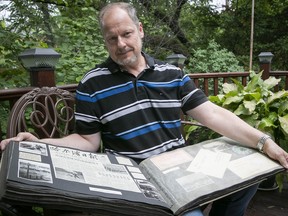
Article content
When Montreal figure-skating coach Karel Vosátka died May 27 at age 92, few people knew he had played a key role in the history of the sport.
Advertisement 2
Article content
Until his retirement at age 89, “Mr. V” was a familiar figure at local arenas, including the 4 Glaces Sportplexe in Pierrefonds and Samuel Moskovitch Arena in Côte St-Luc.
Always impeccably dressed in shirt and tie under his red parka, with ramrod-straight posture in his vintage skates from Vienna, he imparted Axels, Salchows and the value of dedication and hard work to generations of young skaters.
“In terms of his determination and the way he took charge of his skaters, he taught us so much more than skating,” said Nancy Poirier, 52, who trained with Vosátka for almost 10 years, placing eighth in the 1984 Canadian Figure Skating Championships.
“He taught us a certain discipline. He was a gentleman who inspired respect and was respected by all,” she said.
Advertisement 3
Article content
But like most of his pupils and colleagues, Poirier had no idea at the time that Vosátka, a former national pairs champion and professional engineer in his native Czechoslovakia, was also the originator of an important feature of modern figure-skating competition.
In 1963, he invented the short program, now a fixture of competitive figure skating, including the Winter Olympics.
“I only learned later that he had proposed the short program but never, ever did he boast about it,” Poirier said.
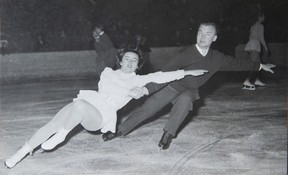
First introduced in 1964 for pair skaters at the European and World Championships, it became part of Olympic competition in 1968.
In 1973, the short program was introduced in men’s and ladies’ singles competitions.
Yet Vosátka, who immigrated to Canada in 1975 after fleeing his homeland in 1969, never received credit for the innovation.
Advertisement 4
Article content
How could such an important contribution go unrecognized?
“Nobody believed it,” he said in an un unpublished interview with this journalist in 2016, looking back on eight decades in figure skating.
Over the years, Vosátka contacted officials with Skate Canada a few times to share the story of how the short program was born but never heard back.
“I said, ‘Well, I will not force it. Forget it,’” he said.
Now, thanks to correspondence Vosátka kept throughout his life, as well as records of the International Skating Union (ISU), the Montreal Gazette has confirmed that he was, indeed, the inventor of the short program.
These include:
- Vosátka’s detailed, six-page proposal for a two-and-a-half-minute compulsory program for pair skaters, signed and dated April 12, 1963. Vosátka submitted the proposal to Austrian figure-skating official Ernest Labin, a member of the ISU Council and later its president. It includes required pair-skating elements — lifts, pair spins and death spirals — and solo jumps, spins and footwork. Unlike compulsory figures and compulsory dance programs, it leaves the arrangement of the required elements and choice of music up to the skaters;
- Minutes of the ISU Council in Helsinki, Finland, in June 1963, reporting that Labin had submitted a proposal “worked out by him with a Czech pair skater, concerning a compulsory program of two-and-a-half minutes.” After referring the proposal to a committee for study, the council approved its introduction on a trial basis at the 1964 and 1965 European and World Figure Skating Championships;
- A registered letter from Labin to Vosátka, dated Aug. 27, 1963, enclosing the ISU’s Communication No. 350, announcing the introduction of a new two-and-a-half-minute compulsory connecting pair program at the 1964 and 1965 European and World Figure Skating Championships. Labin promised to recount to Vosátka in person in September how he managed to pull off “this miracle” (of winning acceptance for the program).
- ISU Communication No. 350, announcing the introduction of a new two-and-a-half-minute “compulsory connecting program for pair skating” at the 1964 and 1965 Europeans and Worlds. It closely matches Vosátka’s proposal.
Advertisement 5
Article content
Former ISU official Sonia Bianchetti Garbato, who provided the Montreal Gazette with the minutes of the 1963 ISU Council, was initially skeptical of the Canadian coach’s claim to have created the short program. Nor had she been aware that Labin had been involved in its adoption, she said in an interview by email from Milan, Italy.
However, “the minutes of the 1963 Congress proved that Mr. Vosátka was involved in the origin of the pairs’ short program,” said Bianchetti Garbato, the author of Cracked Ice: Figure Skating’s Inner World (Libreria dello Sport, 2004).
“I can only say that I was pleased,” she said of her role in helping to uncover the forgotten chapter in figure-skating history. “It was a pleasant surprise.”
Advertisement 6
Article content
The short program had “a very positive impact” on figure skating, she said.
“It definitely helped to improve the quality of the elements included, and gave all the competitors, in single and pairs, the opportunity to perform twice in free skating,” she said.
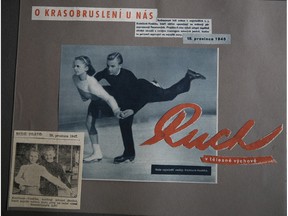
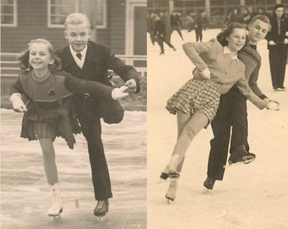
That Vosátka’s story has gone untold for so long is partly due to the turbulent history of 20th century Europe and the challenges he faced as an Iron Curtain refugee forced to start over in a new land.
An only child born Nov. 20, 1929 in Pilsen, Czechoslovakia, and raised in Prague, he began figure skating at age six and became a pair skater at 14. He would later recount how his mother would bring extra pairs of pants for him to change into as he practised on an outdoor rink, where the ice could get wet.
Advertisement 7
Article content
He was nine when Hitler’s troops marched into Prague in 1939 and 18 when Czechoslovakia became a satellite state of the Soviet Union in 1948.
That year, he and partner Blažena Knittlová won silver in the European Championships in Prague. The pair placed ninth in the 1948 Worlds and 16th in the 1948 Winter Olympics, where they were featured in a wire photo published around the world, including in the Montreal Gazette.
In the late 1950s, Vosátka was part of a small delegation of Czech skaters who visited China for a few months to give figure-skating demonstrations in several cities, including Beijing and Harbin.
“It was adventure after adventure. No arenas, of course,” he said in 2016, recalling performances on vast outdoor ice surfaces before audiences of 40,000, who watched in mystified silence.
Advertisement 8
Article content
A six-time Czechoslovakian pairs champion from 1947 to 1961, Vosátka was frustrated at having missed the podium in several international competitions, despite placing in the top six at the Europeans four years in a row from 1958 to 1961.
Part of the problem, he felt, was that pair skaters at that time only performed a five-minute free skate program, for which the starting order was determined by lot.
Singles, on the other hand, presented two programs: compulsory figures and the free skate.
Vosátka and his partner frequently drew first place in the starting order, which he believed put them at a disadvantage.
“In 15 years, in all the international and national competitions, I was getting No. 1 in the drawing of the starting number,” Vosátka said in 2016.
Advertisement 9
Article content
“Everybody was laughing when I was going to draw: always No. 1!” he recalled.
Being the first pair to skate led to lower scores, he felt, “because the judge was (thinking), ‘Somebody could be better, somebody could be worse, so let’s wait.’”
The short program was an “idea born from rage,” he wrote in an account of its creation in 1994, on the 30th anniversary of its introduction.
Under his proposal, the results of the two-and-a-half-minute program helped determine the starting order for the five-minute free skate, in reverse order, so that the top contenders in the short program skated toward the end in the long one. (Today, the short program is two minutes and forty seconds, while the pairs free skate is four minutes.)
Advertisement 10
Article content
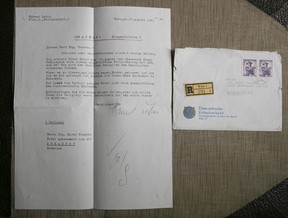
In 1961, Vosátka retired from competition and moved to Bucharest to coach Romania’s national figure-skating team, where he met his wife, Romanian ladies’ champion Cristina Patraulea.
The year was marred by tragedy when all 18 members of the United States figure skating team, many of whom he knew, died in the crash of Sabena Flight 548 near Brussels, en route to the World Figure Skating Championships in Prague.
In 1962 and 1963, the ISU experimented with having pair skaters perform their free skate program twice, over two days, at the European Championships. But in his proposal, Vosátka rejected that option as too physically and psychologically exhausting.
In the spring of 1963, the ISU’s Labin visited the Romanian capital on a business trip. At a chance meeting, Vosátka pitched his idea for the short program. Labin encouraged him to submit a written proposal and Vosátka mailed it off two weeks later. When they next met in September 1963, Labin was glowing, he recounted in the 1994 account. “’Grossartige Idee (great idea), Karel, fabulous, unanimously accepted,’” the Austrian said.
Advertisement 11
Article content
In 1968, Soviet tanks rolled into Czechoslovakia to crush the “Prague Spring” — a short-lived period of political reforms.
The following year, he and Patraulea, who had moved back to Czechoslovakia in 1964, fled to Switzerland with their three-year-old son.
“My dad sold everything, bought gold and hid it in the headlights of a Škoda, which I still have a little replica of,” said Robin Vosátka, now 56.
“I was three years old on top of a mountain in the back seat,” he recalled.
Among the treasured items the family piled into the car was a scrapbook chronicling Vosátka’s skating career, compiled by his father and now one of Robin’s prized possessions.
Allowed to cross the border because he had authorization to work as a coach in the Alpine country, Vosátka applied for political asylum.
Advertisement 12
Article content
Overnight, he went from decorated sports hero to reviled defector, sentenced in absentia to four years in prison.
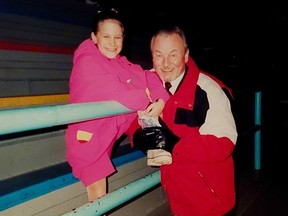
Facing barriers in Switzerland, where it took 12 years to become eligible for citizenship, the family immigrated to Canada in 1975.
Since Vosátka’s engineering credentials were not recognized in Canada, the couple accepted two posts as figure skating coaches in Baie-Comeau and Hauterive (now merged), 675 kilometres northeast of Montreal.
Soon, skaters with the Fantasia Figure Skating Club in Baie-Comeau and Stellaire Club in Hauterive were getting noticed.
“He really put us on the map,” said Poirier, who moved to Baie-Comeau from Bonaventure in the Gaspé region to train with Vosátka.
In 1983, she followed him to Montreal when the family moved there so Robin could continue his education. Robin was also a pair skater who placed fourth in the 1982 junior Canadian championships.
Advertisement 13
Article content
Skaters coached by Vosátka and Patraulea also included Marie Laurier of Île-Bizard, later Canada’s 1998 junior champion, and Josée Arseneault of Baie-Comeau, who won silver in the junior and novice events in the 1987 Canadian Figure Skating Championships.
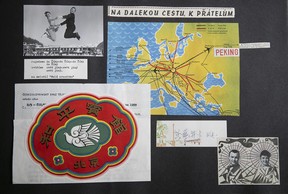
In 2012, the Deux-Rives Figure Skating Club in Pierrefonds honoured Vosátka for a half century of coaching.
Six weeks ago, he died peacefully in his sleep at CHSLD Vigi in Dollard-des-Ormeaux, survived by Patraulea, son Robin, daughter-in-law Glenda Newton and grandson Colin.
While he “was a proud but humble man” who did not like to brag about his achievements, his name deserves to be “forever associated with this sport,” said his son, noting that the creation of the short program was “a major step” in its evolution.
Advertisement 14
Article content
Contacted by the Montreal Gazette, Benoît Lavoie, a former president of Skate Canada who was elected vice-president of the ISU last month, said that while he had been aware of Vosátka’s exceptional coaching career, he had no idea he had invented the short program.
“I’m very touched to learn that we had this pioneering innovator,” said Lavoie, who is the first Quebecer elected to the post and only the second Canadian in the ISU’s 130-year existence. When told of Vosátka’s contribution to figure-skating history, Lavoie said he had goosebumps.
“I wonder how we managed to miss someone like Mr. Vosátka,” he said, adding that he regretted that the story had not come to his attention earlier.
Lavoie, a former figure skater and Olympic judge from Quebec’s Baie-St-Paul region, said he remembered how Vosátka and Patraulea “developed incredibly talented skaters” in the region.
Advertisement 15
Article content
“I said to myself, ‘that coach is amazing,’” he said. “But I never knew that (about the short program). If I had, we would have done something about it, I’m telling you,” he said. “It’s too late to recognize him in his lifetime, but I think that some form of permanent recognition is in order,” Lavoie said. “I would like to see him recognized not only in his region but also in Quebec, in Canada and even at the ISU,” he said.
“This man, this great man, is the one who helped me discover what became my passion, my life,” Laurier posted on Facebook, expressing deep sorrow over the death of a beloved coach who exemplified discipline and respect.
“I had great times with him. Everyone who knew Mr. Vosátka loved him,” she said in an interview.
“Knowing that he is gone has brought back everything he instilled in us,” said Poirier.
“He taught us a lot more than discipline: how to follow your goals and not to give up on things. I think that’s what will stay with us forever. I’m really grateful for that.”

